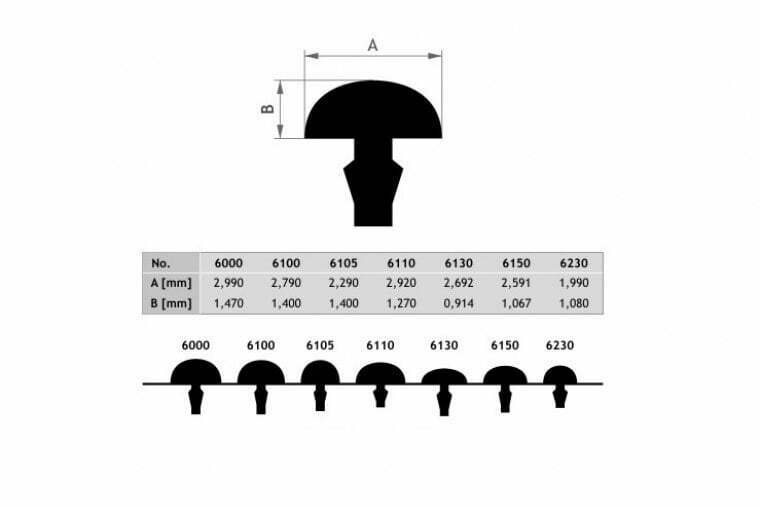Types of Mandolins
The mandolin is a small, stringed instrument that is commonly used in a variety of musical genres, including bluegrass, folk, classical, and even rock. It is a versatile instrument with a unique sound, and there are several different types of mandolins available on the market for musicians to choose from. In this article, we will explore the different types of mandolins and their unique features.
Main Types of Mandolins
Mandolins come in many different types, but the three most common are the bowl-back mandolin, the archtop mandolin, and the flat-back mandolin.
Bowl-back Mandolin
This mandolin style goes by various other names, including Neapolitan mandolin, Classical mandolin, round-backed mandolin, or Classical bowl-back mandolin. The bowl-back mandolin has a rounded, bowl-shaped back and a flat top. Compared to modern mandolins, bowl-back mandolins have bigger voluminous bowl backs, which produce a deeper rounder tone.

They are often used in solo and ensemble performances and are a favorite of musicians who play historical types, such as Renaissance, Classical, and Baroque. The bowl-back mandolin isn’t very popular nowadays, and for that reason, they are both pretty rare and pretty expensive.
Archtop Mandolin
The archtop mandolin is also known as the carved-top mandolin, Bluegrass mandolin, or American mandolin. It has an arched top and a shallower, arched back both carved out of solid wood. Mandolins of this type were developed in America from classical types and this design is credited to Orville Gibson. They are used in a variety of musical styles, and feature two unique body styles, namely the F-style and the A-style.
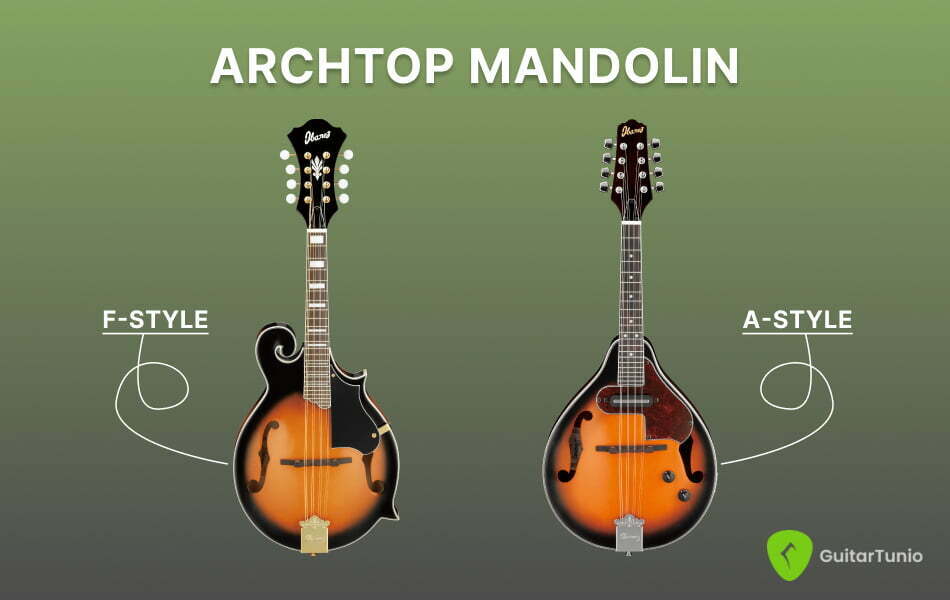
A-style Mandolin
The A-style mandolin is known for its elongated teardrop shape. It has a flat top and back, and the body is usually made of spruce or maple. The A-style mandolin brings a bright, clear sound, and it is often used in bluegrass, folk, and classical music.
F-style Mandolin
The F-style mandolin has a more ornate design, with a distinctive scroll on the body. It is known for its loud, projecting sound and is often used in bluegrass and other types of acoustic music. The F-style mandolin is also more expensive than the A-style, due to its more complex design and construction.
Flat-back Mandolin
The flat-backed mandolin cropped up in Europe in the 1850s. The style uses thin sheets of wood for the body, braced on the inside for strength in a similar manner to a guitar. This back bracing is made to protect the belly from damage while playing.
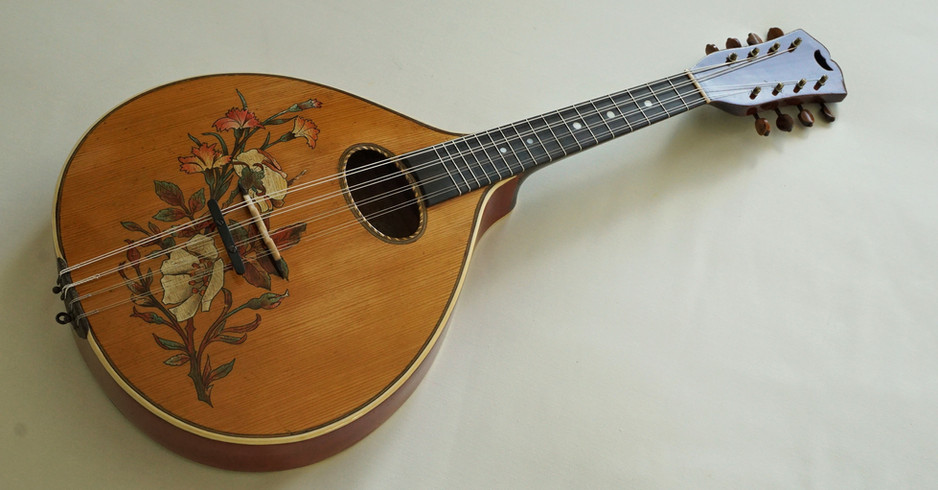
This type of mandolin features a round soundhole, while the body is a rounded almond shape with a flat soundboard. Depending on the designer, sometimes the soundboard could be canted instead of lying flat. Flat-back instruments are best suited for British, Irish, and Brazilian folk music, as well as Mexican estudiantinas.
Other Mandolin Variations
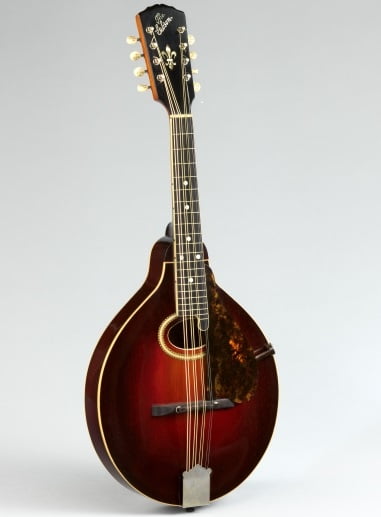
Mandola
The mandola is a larger version of the mandolin, with a deeper, richer sound. It is tuned a fifth lower than the mandolin, to CGDA. It is commonly used in classical, bluegrass, and folk music. The mandola is a popular instrument for solo performances and is often used in ensembles as well as orchestras.
Mandocello
The mandocello is a larger version of the mandola, with an even deeper, richer sound. It is commonly tuned C-G-D-A, an octave plus a fifth below the mandolin, and is often used in classical music and some styles of folk music such as bluegrass or Celtic music. It is a rare instrument, and is often played by advanced musicians who are looking for a unique sound.
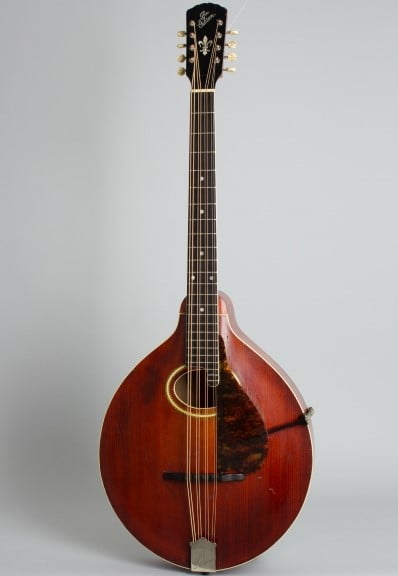
Bouzouki/ Octave Mandolin
The octave mandolin is tuned G-D-A-E, a full octave below the mandolin. It has a longer scale length and a lower pitch, giving it a deep, rich sound that’ll add some serious oomph to your music. This type is commonly used in folk, bluegrass, as well as Celtic music. It is typically played with a flatpick or plectrum, and can also be strummed or fingerpicked.
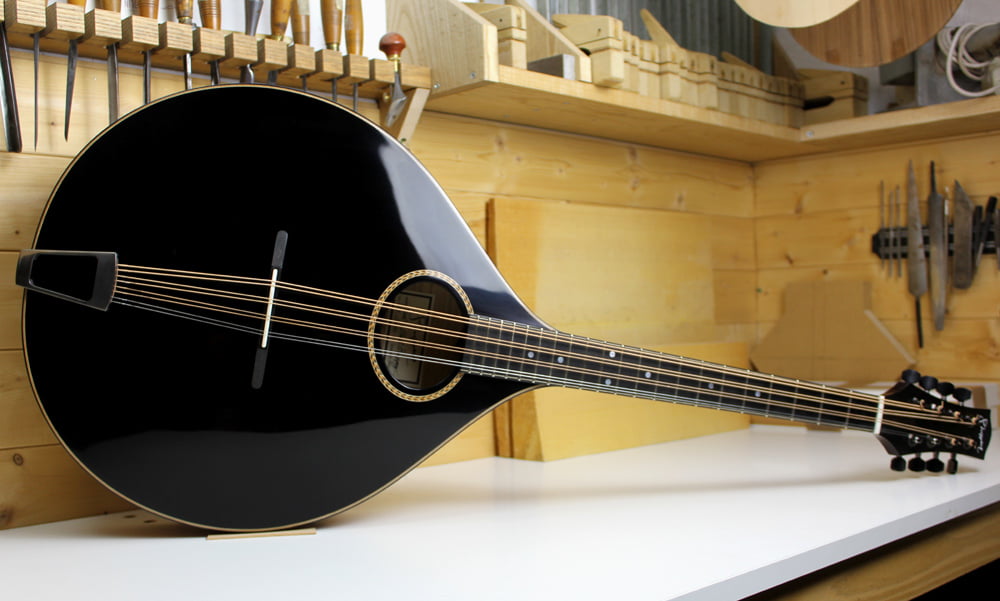
In conclusion, there are many different types of mandolins and each of them has its own unique sound that is suitable for different musical styles and preferences. Whether you are a beginner or an advanced musician, there is a type of mandolin that is right for you. Therefore, it is important to understand your own preferences and needs to make the choice of a type that matches your musical path.
If you are looking for a reliable tool to tune your mandolin, you can check out our Guitar Tunio tuning app. In this application, we offer a powerful mandolin tuner for different manolines with the most advanced sound recognition and processing technology. It also gives you a variety of tuning options so you can experiment with your instrument and gain new sounds. There is much more in this app for you to discover. It's available on both the App Store and Google Play, visit our app stores to learn more about it.



